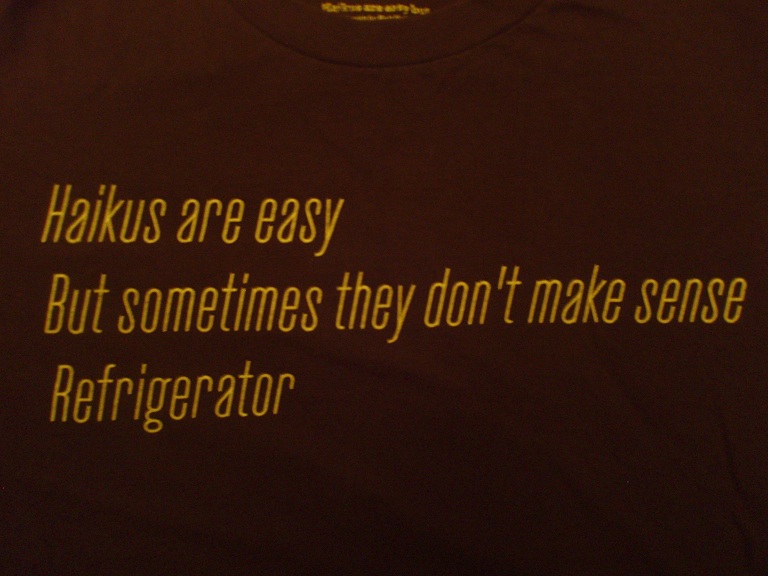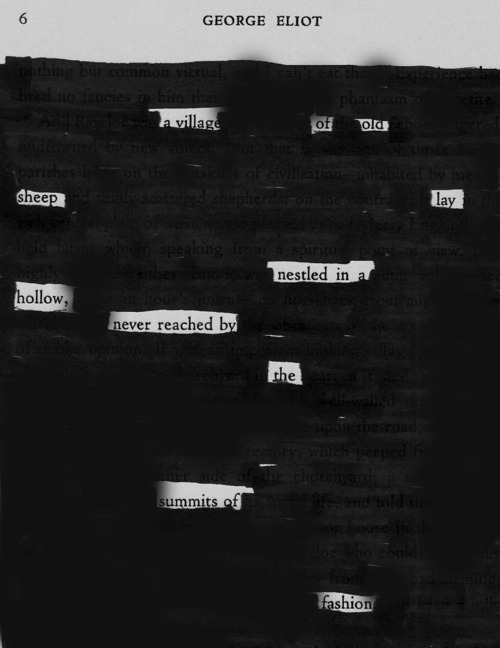Today, I'll cover some of the types of poems you might write.
Sonnets
There are two popular types of sonnets: the Italian (or Petrarchan) sonnet, and the Shakespearean sonnet. Both consist of fourteen lines.
 |
| Petrarchan sonnet, the namesake of this guy, Francesco Petrarca |
 |
| Shakespearean sonnets, unsurprisingly named after this guy |
My poem for yesterday (day 3) was a silly Doctor-Who-themed English sonnet; you can read it here.
Villanelle
A villanelle consists of nineteen lines, divided into five tercets (groups of three lines) and a quatrain. These get really tricky, because you have to use a very specific formula:
Refrain 1 (A)
Line 2 (b)
Refrain 2 (A)
Line 4 (a)
Line 5 (b)
Refrain 1 (A)
Line 7 (a)
Line 8 (b)
Refrain 2 (A)
Line 10 (a)
Line 11 (b)
Refrain 1 (A)
Line 13 (a)
Line 14 (b)
Refrain 2 (A)
Line 16 (a)
Line 17 (b)
Refrain 1 (A)
Refrain 2 (A)
The letters in parentheses mark the rhyme scheme. The refrains are exactly the same each time they are repeated. I wrote a villanelle for the second day of NaPoWriMo; you can read it here.
Ghazal
The ghazal is from Pakistan, and is usually written to express the pain of loss and the beauty of love despite that loss. They are traditionally written in Arabic, but the first anthology of English-language ghazals was published in 1996.
Like the villanelle, a ghazal follows a strict formula. It is made of couplets, with each line containing the same number of syllables. Every verse ends with the same word or group of words (called the radif), after a rhyme (the qaafiya). In the first verse, both lines must end with the qaafiya and the radif.

Haiku
Haiku are Japanese poems that consist of five syllables in the first line, seven in the second line, and five in the third line. They do not rhyme, and are traditionally written about concepts of nature. (The shirts in the images above are not really haiku, because they are not about nature.)
Tanka
A tanka is basically a haiku with two extra lines of 7 syllables each at the end.
Senryu
A senryu is built like a haiku (three lines of 17 or fewer syllables) but they are about human folly instead of nature. Senryu are typically dark or humorous (or darkly humorous) while haiku are more serious. (The shirts in the images above could be called senryu, because they're kind of about humans doing something silly, like insulting their own shirt, or writing nonsensical poetry.)
Kural
A kural is a type of very short Tamil poetry. It has grammar rules (that I don't think apply when you write one in English). The first line consists of four words and the second line consists of three.
Visual Poetry / Altar Poems / Concrete Poetry
There is another type of poetry that is more about the arrangement of the words on the page than about the arrangement of the words in lines. Sometimes the words will form a shape that is relevant to the poem:
 |
| I admit, I found this one through Google Images, so I don't know its origin. But I really, really like it. Particularly the bug. |

You have to be good at using Word (tabs, spaces, etc.) to type one of these, or have a great typewriter, or write them on paper by hand.
Acrostic
I'm pretty sure everyone has had to make one of these for their name. You write your word (your name, the theme of the poem, whatever) vertically down the left side of the page, and write a line starting with each letter. Here, I'll write one for you guys:
Reading a book
Every week gets
Very tiring, but
I enjoy doing it for
Everyone
Who reads the blog.
Maybe, just maybe,
Everyone could
Try to read what
We do every week.
Instead, you all
Could just not do that.
Excellent.
Yeah, it's awful, but I'm not good at acrostics. Usually I make an entire sentence for every letter, but that seemed ridiculous in this case.
Limerick
Back to the rhyming poetry with limericks! You're probably familiar with limericks, like the ones that start with "There once was a man from Nantucket..."
A limerick is made of five lines, usually in anapestic or amphibrachic meter (to be covered next week!) with a rhyme scheme of AABBA. They are usually humorous or obscene.
I tend to think of the radio game show "Wait, Wait! Don't Tell Me" when I hear limericks, because it's my favorite segment of the show. The clue is given in the form of a limerick, and the contestant must provide the last word to answer. Fun!
Redacted Poetry
There are several types of poetry that are derived from existing work. Some of the more unusual ones are flarf (created by performing strange searches in search engines and using the results to write all forms of literature), spoetry (the same idea, but with the subject lines of spam emails), and erasure poetry (taking an entire page of text and eliminating all the words but the ones you want to use in the poem, and keeping them in order).
Redacted poetry is like erasure poetry, except you do it on the physical page of text. You block out (or redact) all the words you don't want seen, and leave the words that make up your poem. Two examples below:


---
So, which forms of poetry are you going to try this month? Go to Grammar Amateur to see my attempts for NaPoWriMo 2013!
No comments:
Post a Comment